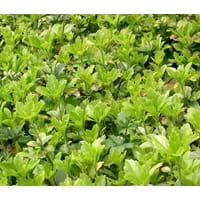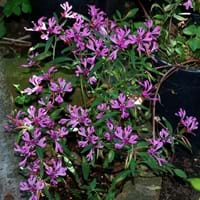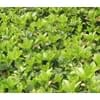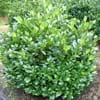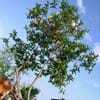Life Span
Perennial
Annual
Type
Broadleaf Evergreen
Flowering Plants
Origin
China, Japan
United States, California
Types
Pachysandra procumbens, Pachysandra terminalis
Santa Clara red ribbons, red ribbons, Raiche's red ribbons
Habitat
Deep, Hardwood forests, moist forests, Terrestrial
Dry areas, foothill woods
USDA Hardiness Zone
4-8
Not Available
AHS Heat Zone
Not Available
9 - 1
Sunset Zone
21,22
A3, 1a, 1b, 2a, 2b, 3a, 3b, 4, 5, 6, 7, 8, 9, 10, 11, 12, 13, 14, 15, 16, 17, 18, 19, 20, 21, 22, 23, 24
Habit
Prostrate/Trailing
Clump-Forming
Flower Color
White
Pink, Fuchsia, Rose, Lavender
Flower Color Modifier
Bicolor
Bicolor
Fruit Color
Not Available
Not Available
Leaf Color in Spring
Dark Green
Green, Gray Green
Leaf Color in Summer
Dark Green
Green, Gray Green
Leaf Color in Fall
Dark Green
Green, Gray Green
Leaf Color in Winter
Dark Green
Light Green
Plant Season
Spring, Summer, Fall, Winter
Spring, Summer
Sunlight
Partial shade, Full Shade
Partial Sun, Partial shade
Type of Soil
Loam
Loam, Sand
The pH of Soil
Acidic, Neutral
Neutral
Soil Drainage
Well drained
Well drained
Bloom Time
Late Spring, Early Summer
Spring, Late Spring, Early Summer, Summer
Tolerances
Not Available
Not Available
Where to Plant?
Ground
Container, Ground, Pot
How to Plant?
Rooted stem cutting, Seedlings, Stem Cutting
Seedlings, Stem Planting
Plant Maintenance
Medium
Medium
Watering Requirements
Needs more water during establishment
Allow to dry out slightly between watering
In Summer
Lots of watering
Lots of watering
In Spring
Moderate
Moderate
In Winter
Average Water
Average Water
Soil pH
Acidic, Neutral
Neutral
Soil Type
Loam
Loam, Sand
Soil Drainage Capacity
Well drained
Well drained
Sun Exposure
Partial shade, Full Shade
Part sun, Partial shade
Pruning
Remove damaged leaves, Remove dead branches, Remove dead leaves
Remove damaged leaves, Remove dead branches, Remove dead leaves
Fertilizers
All-Purpose Liquid Fertilizer
All-Purpose Liquid Fertilizer
Pests and Diseases
Alternaria leaf blight, Red blotch, Stem rot
Red blotch
Plant Tolerance
Drought
Drought
Flowers
Insignificant
Showy
Flower Petal Number
Single
Single
Showy Foliage
No
Not Available
Foliage Texture
Medium
Fine
Foliage Sheen
Glossy
Matte
Attracts
Ants, pollinators
Butterflies
Allergy
allergic reaction
Not Available
Aesthetic Uses
Ground Cover, Mass in beds, slopes
Showy Purposes
Beauty Benefits
Not Available
Not Available
Environmental Uses
Air purification
Air purification
Medicinal Uses
Unknown
Not Available
Part of Plant Used
Fruits
Not Available
Other Uses
Planted in shelterbeds, Showy Purposes, Used for bedding in gardens
Used as Ornamental plant, Used for its medicinal properties
Used As Indoor Plant
Yes
No
Used As Outdoor Plant
Yes
Yes
Garden Design
Edging, Groundcover
Bedding Plant, Showy Tree
Botanical Name
PACHYSANDRA terminalis
CLARKIA concinna
Common Name
japanese spurge, japanese pachysandra, carpet box
Red Ribbons
In Hindi
pachysandra
Clarkia concinna
In German
Ysander
Clarkia concinna
In French
pachysandra
Clarkia concinna
In Spanish
Pachysandra
concinna clarkia
In Greek
Pachysandra
Clarkia concinna
In Portuguese
Pachysandra
Clarkia concinna
In Polish
Runianka
klarkia concinna
In Latin
Pachysandra
Clarkia concinna
Phylum
Vascular plant
Tracheophyta
Family
Buxaceae
Onagraceae
Genus
Pachysandra
Clarkia
Clade
Angiosperms, Eudicots
Angiosperms, Eudicots, Rosids
Tribe
sarcococceae
Not Available
Subfamily
NA
Not Available
Number of Species
Not Available
Not Available
Season and Care of Pachysandra and Clarkia concinna
Season and care of Pachysandra and Clarkia concinna is important to know. While considering everything about Pachysandra and Clarkia concinna Care, growing season is an essential factor. Pachysandra season is Spring, Summer, Fall and Winter and Clarkia concinna season is Spring, Summer, Fall and Winter. The type of soil for Pachysandra is Loam and for Clarkia concinna is Loam, Sand while the PH of soil for Pachysandra is Acidic, Neutral and for Clarkia concinna is Neutral.
Pachysandra and Clarkia concinna Physical Information
Pachysandra and Clarkia concinna physical information is very important for comparison. Pachysandra height is 6.00 cm and width 60.00 cm whereas Clarkia concinna height is 25.40 cm and width 25.40 cm. The color specification of Pachysandra and Clarkia concinna are as follows:
Pachysandra flower color: White
Pachysandra leaf color: Dark Green
Clarkia concinna flower color: Pink, Fuchsia, Rose and Lavender
- Clarkia concinna leaf color: Green and Gray Green
Care of Pachysandra and Clarkia concinna
Care of Pachysandra and Clarkia concinna include pruning, fertilizers, watering etc. Pachysandra pruning is done Remove damaged leaves, Remove dead branches and Remove dead leaves and Clarkia concinna pruning is done Remove damaged leaves, Remove dead branches and Remove dead leaves. In summer Pachysandra needs Lots of watering and in winter, it needs Average Water. Whereas, in summer Clarkia concinna needs Lots of watering and in winter, it needs Average Water.
